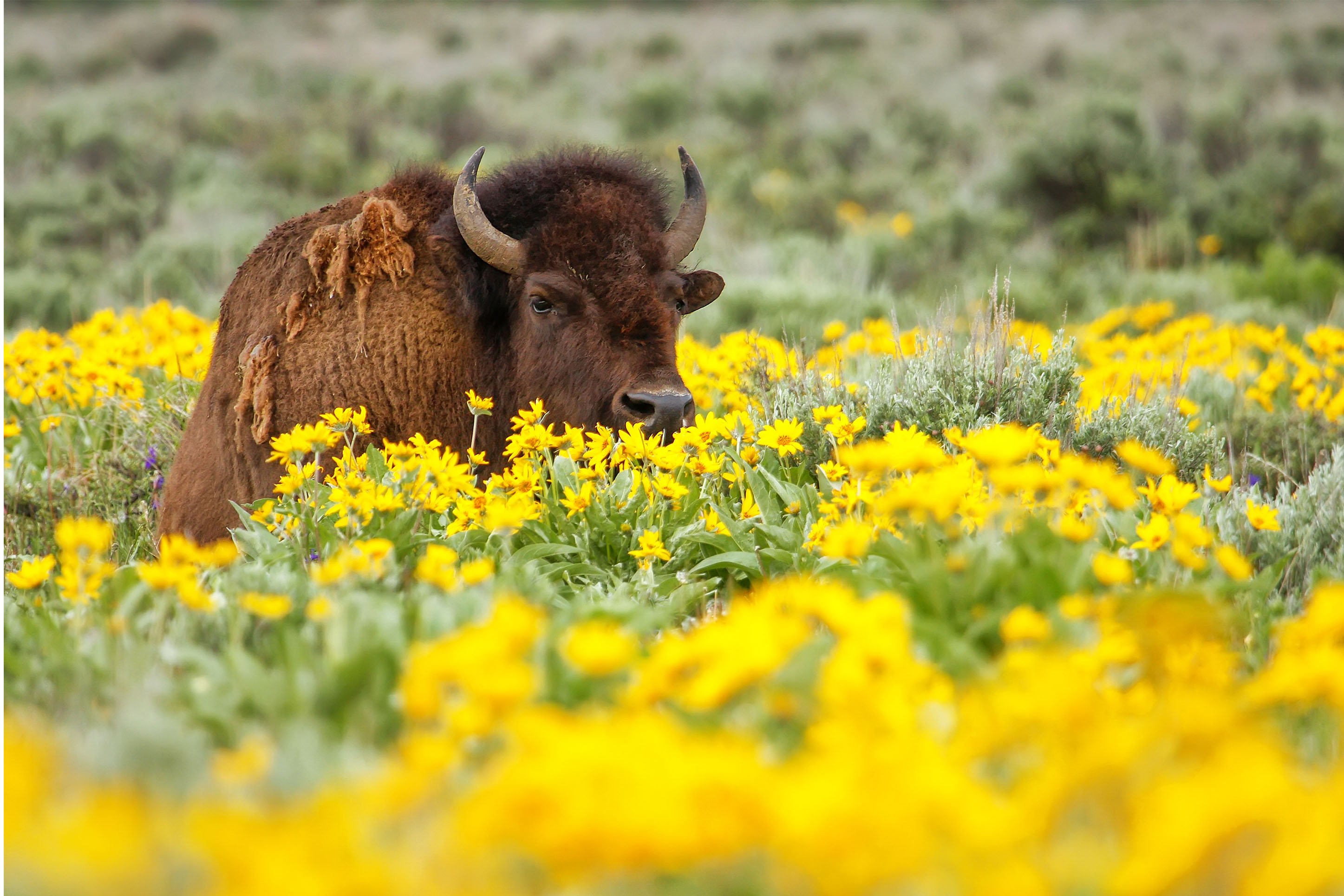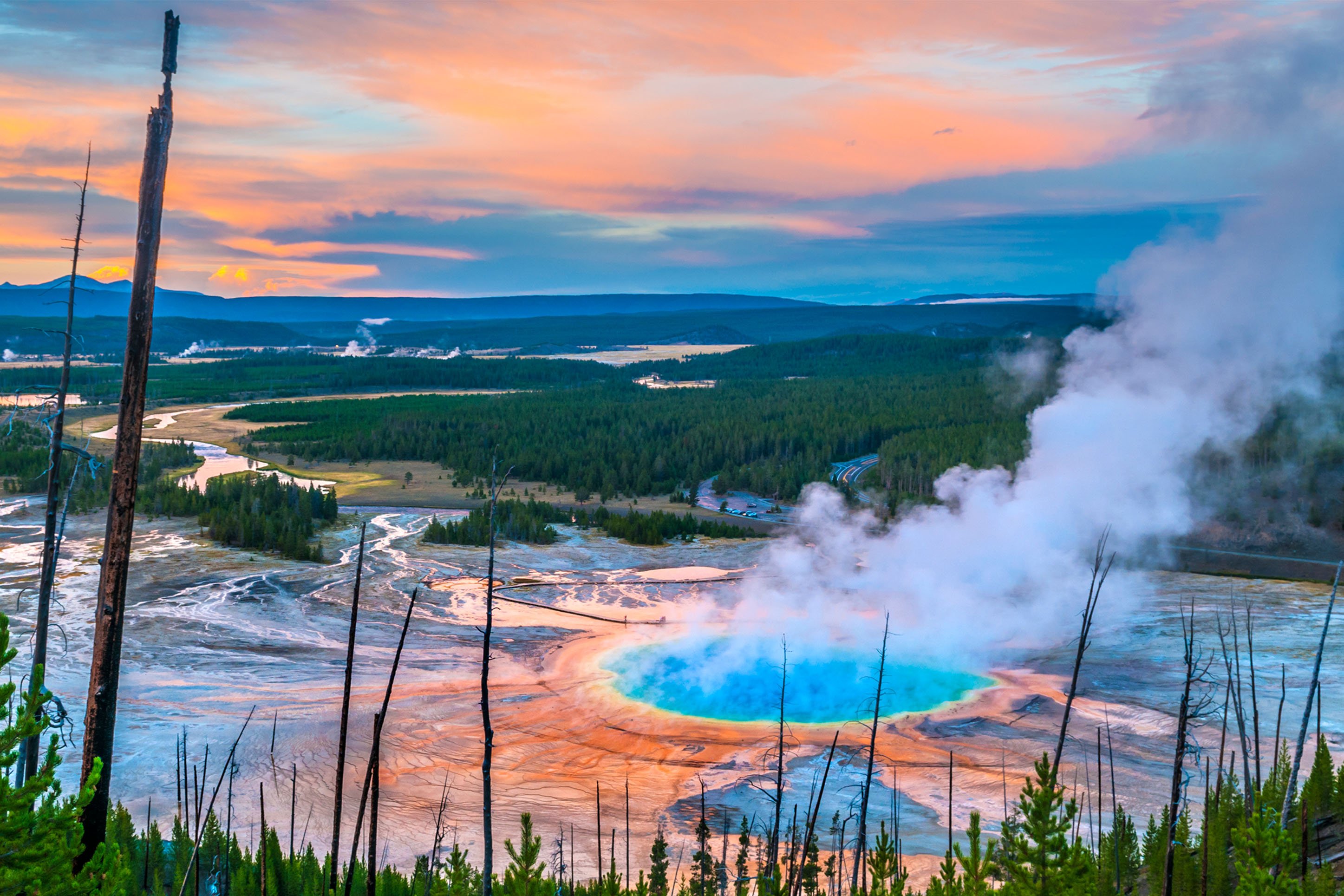Myths of Yellowstone, Busted!
Yellowstone is one of the most well-known National Parks in the world. As with anything that garners a lot of attention, it’s easy for facts to get twisted, and for tall tales to emerge. We’re here to debunk some of the most common myths, and to share some of the interesting details you may not know about.
Myth #1: The supervolcano underneath Yellowstone is due for a super eruption.
According to the United States Geological Survey (USGS), most past eruptions have not been highly explosive. The past fifty or so eruptions were simple lava flows. Given the history, the probability of another caldera-forming explosion is approximately 1 in 730,000 or 0.00014%. It's interesting to note Bob Christiansen, a USGS scientist, delineated the three Yellowstone calderas the old fashion way by walking around with a hammer and hand lens and carefully looking at the rocks and their distributions. Another interesting fact? Only 3% of Yellowstone has been surveyed by professional archaeologists.
Myth #2: Native Americans were afraid of spirits in Yellowstone.
The persistent myth that Native Americans feared Yellowstone and avoided it was simply not true, based on 1,900 archeological sites within Park boundaries and numerous accounts from different tribes about their time spent in this remarkable area. Today, 27 tribes are associated with Yellowstone. As the Park matures, Park officials, management, and Tribal leaders are working together to put forward indigenous truths and envision and co-create Yellowstone's future together.

Myth #3: Theodore Roosevelt created Yellowstone.
While Theodore Roosevelt was often called "the conservation president" and has his name on the famous Roosevelt Arch in Gardiner, he was not the president who signed the world's first national park into being. Ulysses S. Grant signed the Yellowstone National Park Protection Act into law on March 1, 1872, stating that Yellowstone was "reserved and withdrawn from settlement, occupancy, or sale under the laws of the United States." Grant never actually visited Yellowstone, but ironically, Roosevelt was vacationing in Yellowstone when the arch was partially constructed and was asked to speak at the dedication, which led to the name. The arch itself was the idea of Hiram M. Chittenden of the U.S. Army Corps of Engineers, who felt the approach to the Park was barren and lacked suitable grandeur.
Myth #4: Bison are docile and not to be feared.
Bison weigh around 1,400 pounds, with bulls reaching up to 2,000 pounds. And while they roam freely among people, don't let their apparent slow pace fool you. Bison are unpredictable and can spring three times faster than humans. So if you see them starting to move their heads around or stomp their feet, they are aggravated, and you should step away. You should remain 25 yards from most wildlife and 100 yards from bears and wolves.

Myth #5: Yellowstone is the largest National Park.
While Yellowstone was the first, it is not the largest National Park in the U.S. However, with 2.2 million acres, plenty of elbow room remains. And while many of the prominent features are easily accessible from the road or nearby boardwalks, most people never venture into the majority of the Park, making it easy to get off the beaten path and away from the crowds.
Myth #6: Yellowstone is closed in the winter.
False! While most of the roads in Yellowstone are closed to vehicular traffic in the winter, the Park itself is open and accessible via snowmobile or snowcoach tours, or you can ski or snowshoe in. The road from Gardiner at the North Entrance to Silver Gate and Cooke City at the Northeastern entrance is open to vehicles year-round. The Lamar Valley is a great place to watch wolves during the winter – and the backdrop of white snow makes it easier to spot the elusive animals.
If you enjoyed this blog, take a look at some of our other related articles:
- Yellowstone Insider: 10 Not-to-Miss Spots in Yellowstone this Summer
- How to Avoid Crowds in Yellowstone
- 3 Easy Hikes in Yellowstone
In our never-ending quest to keep up with all things new in Bozeman, we have been producing content for years and can't possibly update every blog when new businesses open or existing businesses close. Please reference the publish date and do your own due diligence when making plans.


